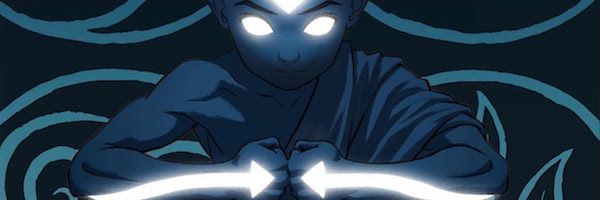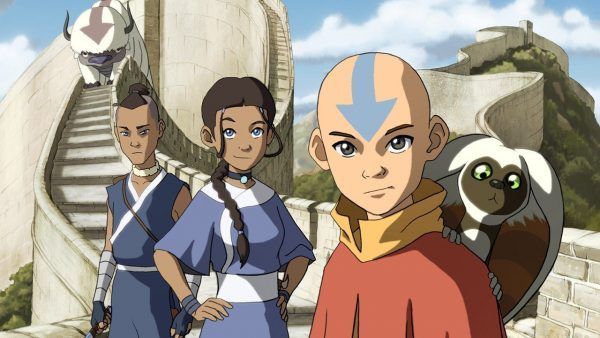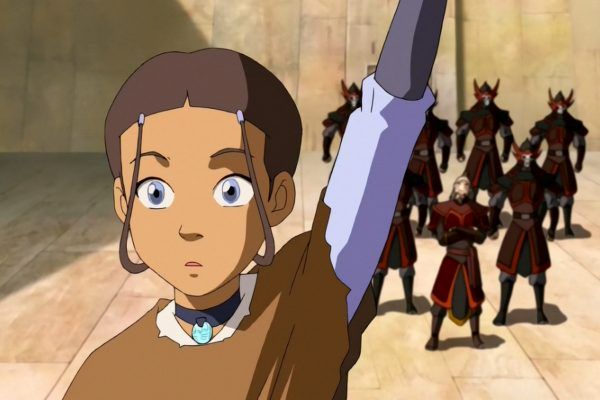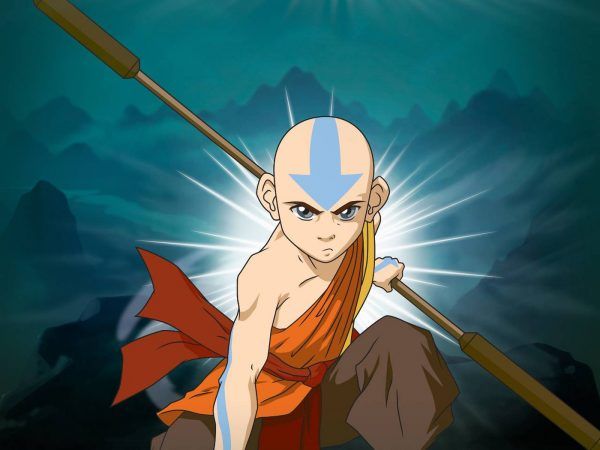With most of us still under lockdown, with no new blockbusters and many TV shows getting delayed, streaming has been an incredibly popular outlet for entertainment. Millions of people were captivated by the story of Tiger King, after all, but no matter how many dozens of new movies and TV shows Netflix releases weekly, there is one show that has consistently stayed at the top 10 most popular shows on the streaming giant — and it aired on Nickelodeon in 2005.
It's been 15 years since its premiere, and 10 years since M. Night Shyamalan nearly killed the franchise, but Avatar: The Last Airbender is undoubtedly the biggest hit of the summer. But no matter how good the show is today (and it remains nearly perfect), why is the show so popular today that it continues to make the Netflix top 10? The reason has to do with what it did for the animation landscape in the mid-2000s, and how it remains so different from anything found in animation today.
Avatar: The Last Airbender felt revolutionary when it aired back in 2005. When it comes to children's animated TV shows at the time, the goal was to simply continue the story for as long as humanly possible, so the stories had no end built-in. The Fairly OddParents, Rugrats, Jimmy Neutron Boy Genius, and particularly Nickelodeon's biggest hit ever, SpongeBob SquarePants are as episodic as animated shows get, and they follow the number 1 unspoken rule of sitcoms: things can't change and people can't be content. The moment this becomes untrue, the show ends and there's no more money to get out of it. But The Last Airbender featured an epic story told continually across 3 contained seasons.
From the opening moments of the first episode, the story of Avatar Aang had a clear ending in sight: Aang would have to fight the Fire Lord and bring balance to the world. This gave audiences a clear signal that the show would not simply continue for years and years until it ran out of stories to tell, and instead made them more interested in the story being told because they wanted to know how the characters would progress and how their actions would impact the world at large.
It's hard to express how groundbreaking The Last Airbender's approach to storytelling was. There were plenty of other genre animated shows before Aang, like the sci-fi boom of the '70s and '80s, and other groundbreaking shows like Batman: The Animated Series and Gargoyles, but they had little in terms of an overarching narrative. And when it came to Cartoon Network or Nickelodeon by the time The Last Airbender premiered, there were plenty of genre shows like Danny Phantom, My Life as a Teenage Robot, The Grim Adventures of Billy & Mandy, Foster's Home for Imaginary Friends and others, but they were comedy shows first and genre shows second.
The Last Airbender blended its comedy (which was very much aimed at kids) with a mature and grand-scale story, resulting in a show that both kids and adults could appreciate. More than that, however, it knew how to balance episodic content with serialized storytelling. Each episode of the show, particularly in the first season, feels very episodic. Aang and the group would fly over to a new location, get discovered and in trouble, and they fight while doing something good for the people of the town, and the process would start again. But what set the show apart was that the episodes worked as self-contained stories full of sharp humor, but they also built up until seemingly one-off characters became major allies in the final conflict. These small connecting dots early on helped ease viewers into the more connected second and third seasons, even if the show never forgets the value of an entertaining individual episode.
This is what makes The Last Airbender stand out today. The groundbreaking elements that made the show so special and beloved back then have became nearly commonplace today. Genre-heavy cartoons are everywhere, from Adventure Time and She-Ra and the Princesses of Power, to Harley Quinn and Rick and Morty. Whereas serialized storytelling was limited to two or three-part episode arcs in the early '00s, nowadays Steven Universe and Trollhunters can get away with telling a single story across an entire season.
The difference is that we've now grown accustomed to heavily serialized shows that don't know or care about the power of a well-told stand-alone episode. Sure, the "Ember Island Players" episode of The Last Airbender may not be the most exciting way to move from a cathartic episode in which Katara faces her mother's killer to the series finale, but it is one of the funniest and most inventive recap episodes there is, and it serves as a refreshing breather before the 2-hour final battle against the Fire Lord. Similarly, if The Last Airbender was a show like 24 and had no space for individual stories, we wouldn't have gotten "Zuko Alone," an episode that's often considered the best of the entire series.
Game of Thrones may have heralded a new Golden Age of genre TV with its overly bleak and serious tone, and we may have more children's animated shows with mature subjects and stories than ever before, but the best ones still understand when you have to put on the brakes a bit and let your audience laugh. That was the secret behind The Last Airbender's success. It sat at the perfect intersection between serious, adult storytelling and goofy yet fun children's entertainment, and it knew when to lean one way over the other.
When the Disney animated show Wander Over Yonder got canceled in 2016, its creator, Craig McCracken wrote about the reason why his show proved unpopular with the network, "Historically, Networks do not like serialization in comedy cartoons because serialized cartoons do not rate as high in the repeats as the stand alone cartoons do," McCracken explained. "They have found that once a viewer has watched an episode and got the next part of the story, they tend to not watch that same episode when it repeats. But if the show was just a simple funny cartoon they will watch it again, because they want to laugh at the jokes again."
That might have been true then, and there is certainly a point to be made that Nickelodeon has put way more resources to continue telling SpongeBob SquarePants stories with movies and now a spin-off series instead of multiple Avatar prequels and sequels (besides the excellent The Legend of Korra). The children's animation landscape as a whole is moving away from comedic, episodic shows and towards the more mature, high-concept and serialized cartoons that have come out in the wake of the success of Avatar: The Last Airbender. But as this happens, we should also consider that, right now, it is not a new or even a recent animated show that has remained in the top 10 most popular titles in the biggest streaming platform in the country, and has been trending nearly daily on social media platforms like Twitter and Tik-Tok.
Instead, it is Avatar: The Last Airbender, the 15-year-old show that, like its titular character, serves as a bridge between the old and the new. It is the show that brings balance to an ever-changing industry and manages to remind adults of the kind of shows they used to enjoy as kids, while appealing to kids who are used to the kind of shows currently airing on TV and streaming that became the biggest hit of the summer of 2020.




